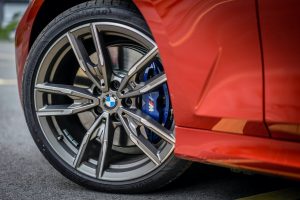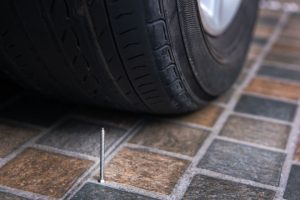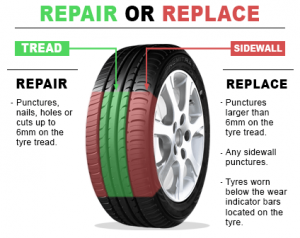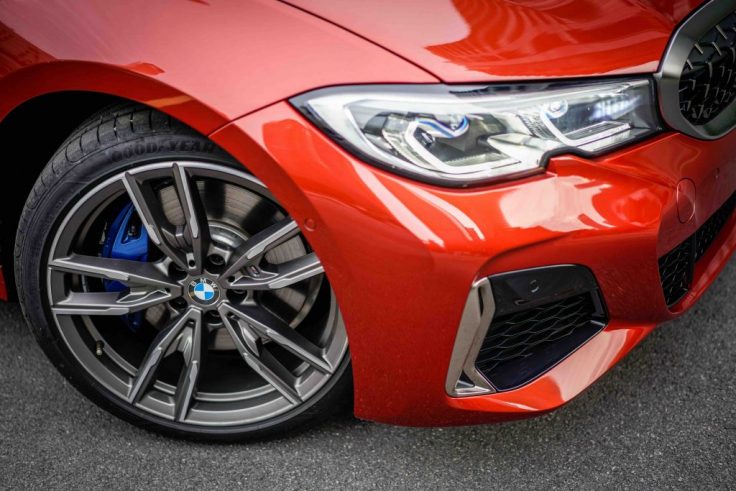It’s important to know what kind of tires you have on your car, thus if you are ever faced with an adverse situation, you’ll know what you safely can and cannot do. BMW equips the majority of their cars with run flat tires.

Benefits of Run Flat tires
- You can drive on a flat tire: The main benefit of a run-flat tire is that it allows you to keep driving—up to 80km per hour. This means you can drive your car to a safe location where you can change your wheel or drive to a garage where they can change your tyre.
- More stable after a blowout: Because a run-flat tire can support the vehicle without any air pressure, steering and handling will remain near normal after a sudden deflation.
- Give greater control over your car: Sometimes you may not even notice you have a puncture until it is too late, you’ve lost control of your car and crashed. Run flat tyres will give you greater control over your car even when they are completely out of air.
- Lower vehicle weight: With no spare tire and the repair tools removed, vehicle weight is reduced.

What is the difference between standard tires and run-flat tires?
The majority of BMW cars are equipped with run-flat tires. As the name suggests, run-flat tires are tires that allow you to continue driving after a puncture. It was designed in such a way that the driver can take his or her car to an auto repair shop or a safe, level area where you can change your tire.
However, there are specifications to how fast and how far you can drive on run-flat tires. Specifications vary for each brand. Check with your manufacturer.
There are two types of run-flat tires:
- Self-supporting Run-flat Tire System– These tires have reinforced sidewall construction which continues to support the car in case of air loss. This feature will allow you to continue driving after losing air pressure up to the speed and distance specified by your car manufacturer.
- Support Ring Run-flat Tire System– These tires feature a ring of hard rubber or another structure that can support your car’s weight in case of air loss.
Whether your car has a self-supporting system or a support ring system, the run-flat tire system may only be used on vehicles equipped with a Tire Pressure Monitoring System (TPMS).
How can you identify if your car has run-flat tires or standard tires?
In BMW vehicles, you need to look for the RSC label.

Should I repair or replace my run-flat tire?
If you find that your car has run-flat tires, most manufacturers recommend replacement when you have driven them in zero pressure or a severely under-inflated condition. That’s because, once they’ve been driven on, they lose their structural integrity, making them unsuitable for puncture repair. If they are patched up, it’s highly likely they’ll puncture again down the line due to uneven wear and loss of rigidity.
And that’s their biggest drawback compared to conventional tires, which can often be repaired reasonably cheaply after a puncture (provided the hole isn’t in the sidewall). Given the expense of buying run flat tires in the first place, each puncture could end up costing a small fortune.
Should I repair or replace my standard tires?
You can repair a standard tire when it gets damaged, provided they meet the following criteria:
1. It has not been driven on when flat.
2. The puncture is no greater than ¼ of an inch.
3. The damage is limited to the tread section of the tire (sidewall damage will ruin the tire immediately).

How can my standard tire be repaired when it gets flat?
- Never have your tire plugged.
2. If your standard tire has a puncture, it should be filled from the inside, and then a patch should be placed on top of the repair.
3. Repairs should only be made after a thorough inspection.
4. If the previously mentioned criteria are not met, you have to replace the damaged tire.
5. Inspect the tire on the other side of the car. If it has a low tread depth, you need to replace that one too.
Some tire manufacturers recommend replacing all four tires at the same time. However, if you will replace only two tires, be sure that the new tires are the same size and tire type as the current tires.
Please take note that if you are uncertain about the integrity of the tire, you have to replace it.
The best way to know what to do with a flat tire is to consult auto experts. If you live within Ermington NSW 2115, Eastwood NSW 2122, Epping NSW 2121, Newington NSW 2127 and surround area you are welcome to come and visit us at Sydney Car Repair.
Our auto experts specialize in both foreign and domestic brands and have a combined 10 years of experience. We have built a stellar reputation for providing honest customer care with meticulous, expert service that goes the extra km.
All of our car servicing and car repair jobs are carried out by licenced vehicle technicians with years of extensive experience across all popular and luxury makes and models.
Our Address: 71 Atkins Road, Ermington, NSW 2115
If you are live in Sydney or Australia, you are welcome to visit our shop to get your car service or repair. We do car servicing and car repair job for people who live in Eastwood, Carlingford, Epping, Ryde, Ermington, Rydalmere, Parramatta, Newington, North Parramatta, Epping, North Rocks, North Mead, West Ryde, Dundas, Telopea, Oatlands, Camellia, Rosehill, Carlingford, North Eppin, Gordon, Hunters Hill, Auburn, Merrylands, Fairfield, Burwood, Ashfield, Seven Hills and all the rest of Sydney, Australia.
If you are looking for Sydney car servicing, car service near me, car repair near me, tire repair near me, car mechanic near me, car scratch repair, car air conditioning repair near me,tire replacement, car windows replacement, brake repair near me, car engine repair or engine replacement please visit us, we are happy to help you to do your car serving and repair.


